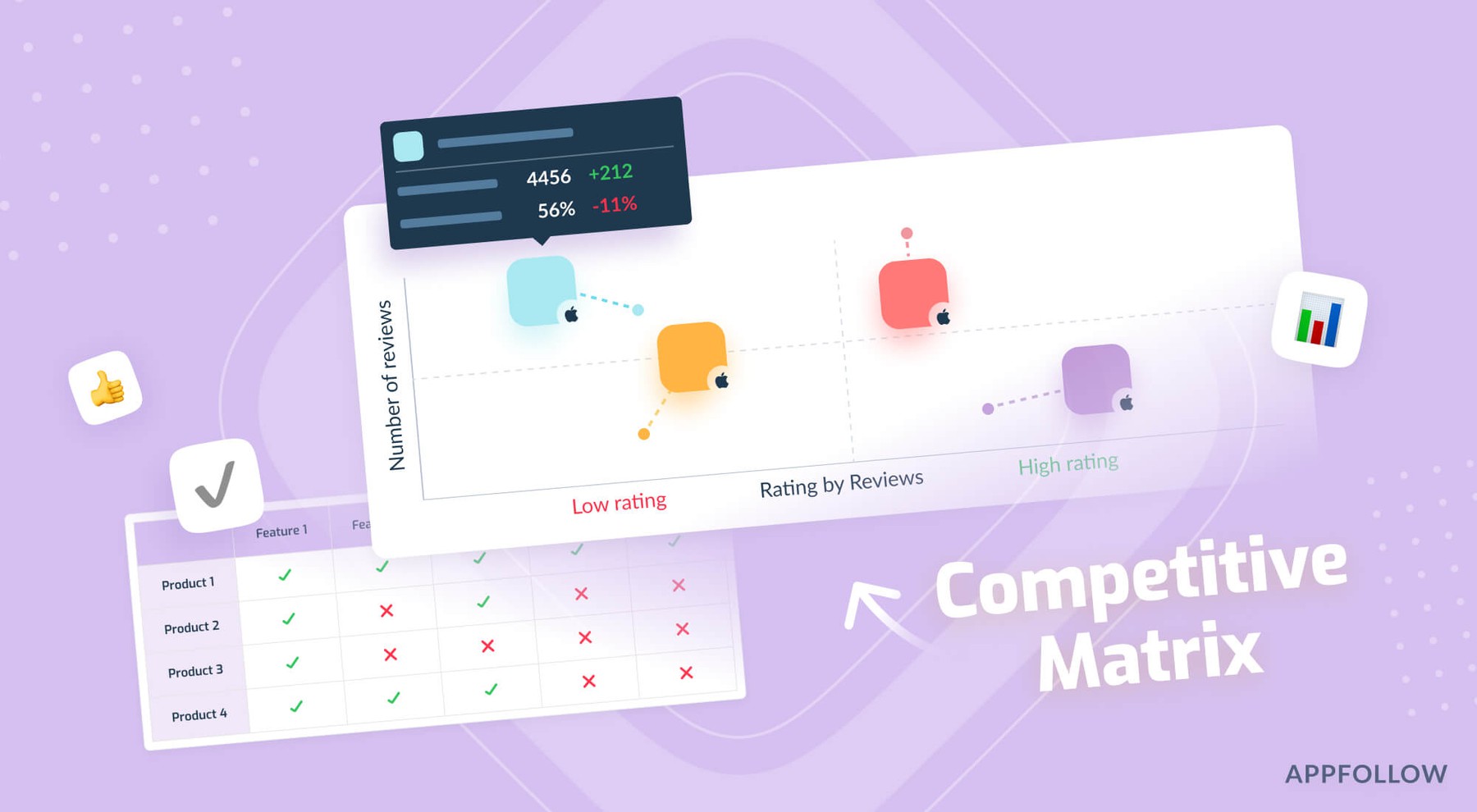Meaning of Competitive Matrix
A competitive matrix, also known as a competitive analysis matrix, is a strategic tool businesses use to compare and evaluate their strengths and weaknesses against those of their competitors. The matrix helps businesses gain insights into their competitive position within the industry, identify areas of opportunity, and make informed decisions about their marketing, product development, and overall business strategy.
The matrix typically includes two main components:
Competitor Analysis: This section lists the major competitors in the industry. The analysis may cover direct competitors who offer similar products or services and indirect competitors who address the same customer needs through different means.
Key Factors: In this part of the matrix, various key performance indicators (KPIs) or factors relevant to the industry are identified and listed. These factors can vary depending on the nature of the business and the industry. Still, they may include product quality, pricing, market share, distribution channels, customer service, brand reputation, technological innovation, and more.
Once the competitors and key factors are listed, the company would rate each competitor’s performance on each key factor. This rating is often done on a numerical scale or through qualitative assessments, such as “strong,” “average,” or “weak.” The data is then plotted in a matrix format to represent the competitive landscape visually.
By analyzing the competitive matrix, businesses can identify areas where they excel compared to their competitors (competitive advantages) and areas where they need to improve (competitive disadvantages). This information can guide decision-making, allowing businesses to capitalize on their strengths and work on their weaknesses to enhance their overall competitiveness in the market.
Competitive matrices are valuable tools for established businesses and startups, as they provide a clear picture of the competitive environment and help develop effective strategies to succeed in the market. It’s important to note that you must update the competitive analyses regularly to reflect industry changes and stay relevant in the ever-evolving business landscape.
Importance of a Competitive Matrix
- It helps you identify your strengths and weaknesses. By comparing your business to its competitors, you can see where you are doing well and where to improve. This information can help you to develop strategies to strengthen your business and compete more effectively.
- It helps you identify opportunities and threats. The competitive matrix can also help you identify market opportunities that your competitors are not exploiting. This information can help you to develop strategies to capitalize on these opportunities. Additionally, the competitive matrix can help you to identify threats to your business, such as new entrants or changes in customer preferences.
- It helps you to make better decisions. The competitive matrix can provide you with valuable information that can help you to make better decisions about your business. For example, the information from the competitive matrix can help you to decide which products or services to offer, how to price your products or services, and how to market your business.
Overall, a competitive matrix is valuable for understanding your landscape and identifying opportunities to improve your business. If you are not already using a competitive matrix, consider doing so.
How to Use a Competitive Matrix to Gain Market Share
Here are the steps on how to use a competitive matrix to gain market share:
- Identify your competitors. This includes both direct and indirect competitors. Direct competitors offer the same products or services as you do. Indirect competitors are companies that offer products or services that are similar to yours but not identical.
- Collect data on your competitors. This data should include information on their products or services, pricing, marketing strategies, and customer base. You can collect this data through market research, industry reports, and social media monitoring.
- Create a competitive matrix. This matrix should include a list of critical success factors for your industry. Critical success factors are the most important factors for success in your industry. For example, in the retail industry, critical success factors might include product selection, pricing, and customer service.
- Rate your competitors and your company on each critical success factor. You can use a scale of 1 to 5, with 1 being the lowest and 5 being the highest.
- Analyze the results of your competitive matrix. This will help you identify your strengths and weaknesses compared to your competitors. You can then use this information to develop strategies for gaining market share.
Here are some strategies that you can use to gain market share based on the results of your competitive matrix:
- Focus on your strengths. If you have strengths that your competitors don’t have, you can use these to your advantage. For example, you can emphasize this in your marketing materials if you have a strong customer service team.
- Improve your weaknesses. If you have weaknesses that your competitors do, you can work to improve them. For example, if your pricing is higher than your competitors, you can lower your prices.
- Differentiate yourself from your competitors. If you can find a way to differentiate yourself from your competitors, you can gain an advantage. For example, you could offer a unique product or service or focus on a specific market segment.
- Target your marketing efforts. You can use your competitive matrix to target your marketing efforts to the right audience. For example, if your competitors target a younger audience, you could target an older audience.
Using a competitive matrix, you can gain valuable insights into your competitors and your company. This information can help you develop strategies for gaining market share and becoming a more successful business.
Tips for using the competitive matrix effectively
- Choose the right factors to compare. The factors you compare should be relevant to your industry and target market. For example, if you’re a software company, compare factors like pricing, features, customer support, and ease of use.
- Assign weights to the factors. Not all factors are created equal. Some factors will be more critical to your customers than others. To reflect this, you can assign weights to the factors. This will help you to determine which factors are most important to your competitive advantage.
- Be objective. When creating your competitive matrix, it’s important to be objective. Don’t try to make your company look better than it is. Be honest about your strengths and weaknesses, and compare yourself to your competitors fairly.
- Use the matrix to inform your strategy. The compe titive matrix should be a living document. You should update it regularly as your competitors change and your business grows. Use the matrix to inform your strategy and to identify areas where you can improve.
Here are some additional tips:
- Involve multiple stakeholders in the creation of the competitive matrix. This will help to ensure that the matrix is comprehensive and accurate.
- Use a variety of sources to gather data for the compe titive matrix. This could include industry reports, customer surveys, and competitor websites.
- Use a visual representation of the competitive matrix. This will make it easier to understand and communicate the results.
- Update the compe titive matrix regularly. This will ensure that the information is accurate and up-to-date.
By following these tips, you can use the compe titive matrix to understand your competitors better and identify areas where you can improve your business.
Here are some examples of how you can use the competitive matrix:
- To identify your strengths and weaknesses. The competitive matrix can help you to identify your strengths and weaknesses relative to your competitors. This information can be used to inform your marketing and sales strategy.
- To identify opportunities for improvement. The competitive matrix can help you to identify areas where you can improve your business. This information can be used to set goals and allocate resources.
To benchmark your performance. The competitive matrix can be used to benchmark your performance against your competitors. This information can be used to track your progress and to identify areas where you need to improve.




